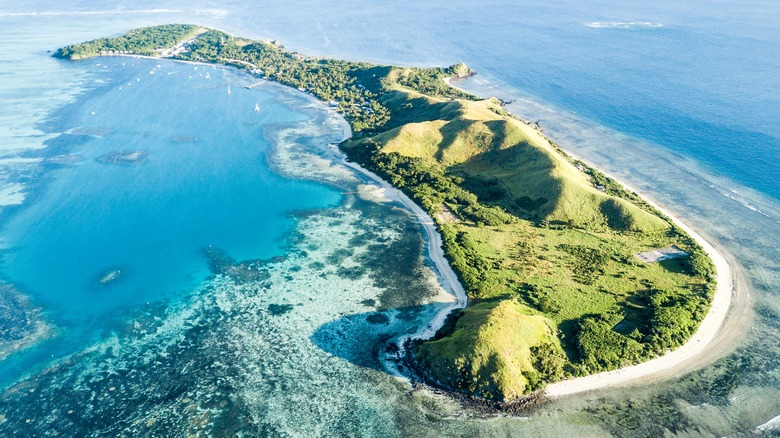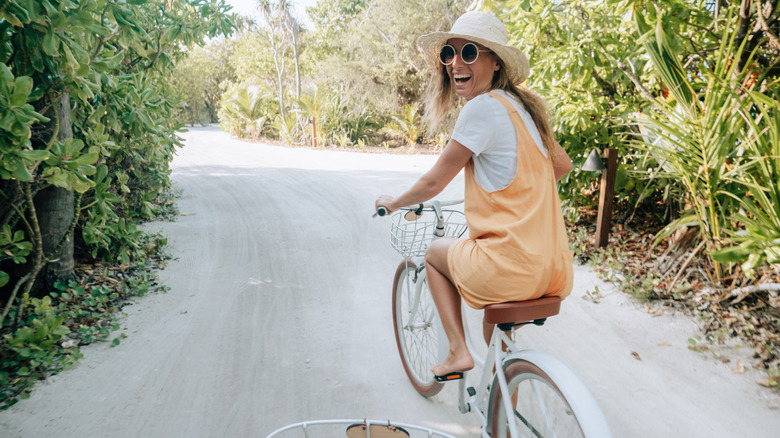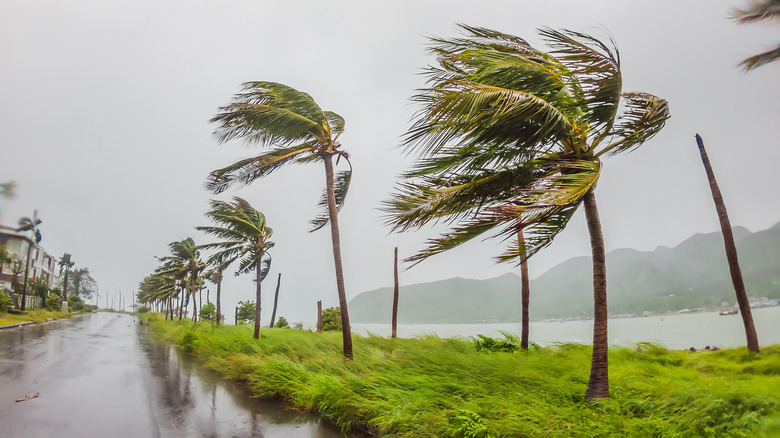The Best And Worst Times Of The Year To Plan Your Fiji Vacation
The South Pacific has an uncanny way with scenery, sunshine, and outdoor adventure that seems designed by nature to impress. Travelers who are fortunate enough to be setting their sights on a vacation to Fiji will find themselves within reach of no less than 333 islands making up the greater archipelago. The landscape here is defined by beautiful beaches, lush tropical foliage, volcanic peaks, and surrounding waters that house coral reefs, too. The expectations are typically high with so many top-rated islands to visit; however, in all of the excitement, some travelers tend to overlook the environmental factors that could alter their experience significantly upon arrival.
When planning your Fiji vacation, the time of year you decide to travel makes a huge difference. Fiji only has two distinct seasons which include summer and winter. Summer is Fiji's designated wet season, spanning November to April. Winter runs from May to October each year and offers travelers a decidedly drier and sunnier experience. Depending on how you're hoping to spend your time on the islands, understanding the differences between these travel seasons will be key to making your way here during what you might consider to be either the best or worst times of the year.
Winter is wonderful for outdoor adventures
Your travel style can help determine the best time of year to enjoy a getaway to Fiji. If you want to spend ample time outdoors, a winter trip is a good choice. While the word "winter" might conjure up ideas of much cooler weather for your island vacation, Fiji boasts comfortable temperatures during this time. Between May and October, your vacation will likely include sunny skies and average daily highs around 70 and 80 degrees Fahrenheit. The coolest months of the season are July and August, and even then, temperatures remain in the refreshing mid-70s. Plus, according to Tourism Fiji, winter months like May in Nadi average only around 3 inches of rain, whereas summer months like March see rainfall averages nearing 13 inches.
This mild weather sets the scene for fun outdoor activities like bicycling along the Coral Coast in Viti Levu. You can rent a bike at the highly-rated Stinger Bicycles in Nadi and pedal along a coastline known for its mangroves, family-friendly beaches, and dunes. You won't get rained out of trips to places like the popular Kula Wild Adventure Park, where you can pair ziplining with iguana and sea turtle encounters. Underwater adventures are available in the winter, too, at places like the Beqa Lagoon Resort. This destination provides a unique opportunity for guests to enjoy customized shark dives alongside instructors who belong to the Professional Association of Diving Instructors.
Beware of summer rain and humidity
Summer is typically considered the worst season to travel to Fiji because you'll constantly need to be prepared for extreme weather. Downpours are typical between November and April as a result of Fiji's sub-tropical climate. According to Tourism Fiji, destinations like Nadi experience around 18 days of rainfall in January, while Suva sees around 23 rainy days during the same timeframe. Travelers who come to Fiji in the summer will also be met with humid conditions. The most humid period of the year extends from mid-September through early July. The summer month with the highest humidity is typically March, with 31 days "that are muggy or worse," explains Weather Spark.
The weather this time of year isn't ideal for travel, but there are still options for indoor fun should you find yourself in Fiji during the summer. On a rainy day, the Fiji Museum — which is rated as one of TripAdvisor's top things to do in Suva — is great for browsing local artifacts spanning nearly 4,000 years of history. If you're interested in experiencing traditional Fijian village life, there are guided tours to book at the Kalevu Cultural Center located in Gecko's Resort. Additionally, a covered outdoor cooking class with the beloved team at Vavavi could be the highlight of your summer getaway. This family-operated culinary experience is where you'll learn the art of traditional lovo cooking before enjoying your made-from-scratch creations in good company.


